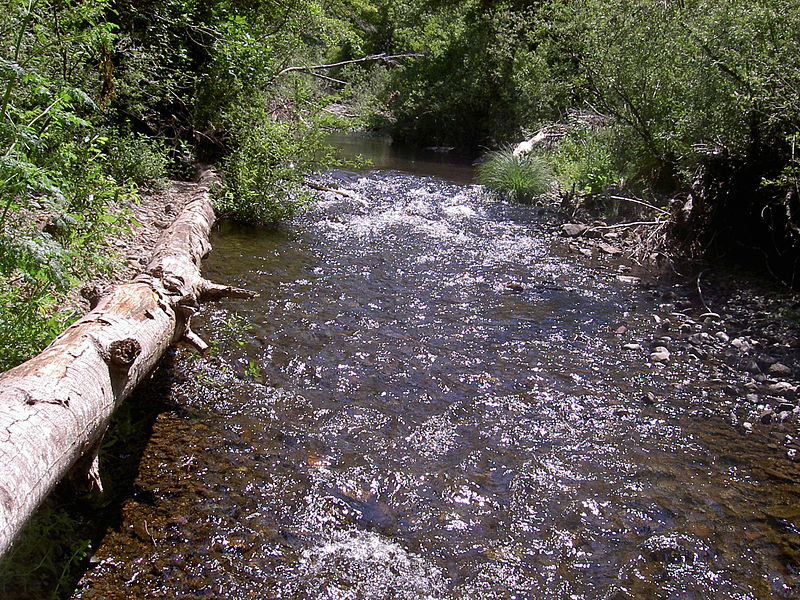The “SAN GERONIMO HEADWATERS OF LAGUNITAS CREEK AND THE SHORE OF TOMALES BAY” have officially been listed as a “Priority Conservation Areas” by the Association of Bay Area Governments (ABAG) See http://www.bayareavision.org/initiatives/PDFs/Region_PCAs_11×17.pdf .
The listing comes as a result of recent nominations submitted by SPAWN in partnership with the National Park Service.
According to the ABAG website:
ABAG Priority conservation areas are areas of regional significance that have broad community support and an urgent need for protection. These areas provide important agricultural, natural resource, historical, scenic, cultural, recreational, and/or ecological values and ecosystem functions. Knowing the region’s conservation priorities for targeting acquisition efforts will promote collaboration and investment in these areas that are critical to the region’s quality of life and ecological diversity.
The purpose of designating priority conservation areas through the FOCUS Program is to accelerate protection and restoration of key natural lands in the San Francisco Bay Area through purchases or easements. Conservation will be promoted through regional designation by:
– Coordinating conservation efforts within a regional framework of near-term priorities
– Providing a strong platform on which to leverage public and private resources
– Building upon prior and existing land protection efforts and investments
– Providing opportunities for forging new partnerships
The San Geronimo Valley, located in unincorporated west Marin County, is the last un-dammed headwaters of the Lagunitas Creek Watershed (Kent Lake and Nicasio Reservoir eliminated the other two major headwaters areas in the last century). These 9-square-miles of habitat represent less than 9% of the total 102 square-miles of the entire Lagunitas Watershed, but provides coho spawning habitat for upwards of 40% of the Lagunitas population and one-third of the coho juvenile rearing habitat.
The semi-rural San Geronimo Valley has approximately 3,500 residents living on 1,500 parcels. Another approximately 900 parcels currently remained undeveloped, yet face increasing pressure as previous obstacles to development such as the inability to use traditional septic systems have been erased by new technology such as “mound” septic systems. Furthermore, the increased value of land has resulted in new landowners who are building new larger and larger houses (many with multiple car garages) or replacing the current older modest homes, many of which were originally built as part-time summer cabins. This “gentrification” of the character of the Valley threatens to significantly increase destruction of riparian habitat, increase impervious surfaces and runoff that cause bank failures, sedimentation and other associated pollution of the stream systems and threaten the survival and recovery of California coho salmon.
“We thought it important enough to make this designation because what happens in the San Geronimo Valley will determine whether Lagunitas coho recover, or even survive.” said Todd Steiner, executive director of SPAWN. “We are seeing more destruction of streamside habitat every day, a recipe for extinction. Coho salmon, as an indicator species, is not likely to survive full build-out of the hundreds of residential parcels open to development in the headwaters region. We need to take action soon if we’re serious about protecting and recovering the Lagunitas Creek coho population.”
SPAWN believes a program to purchase and upgrade the ecological functions of sensitive creekside parcels as well as implement conservation easements on currently developed creekside parcels, a well-recognized extremely important tool in the conservation “toolbox” missing from the current strategies to protect the Lagunitas Creek Watershed and the State’s most important wild coho population.
Steiner added, “Our actions here [in the Valley] impact SP Taylor State Park, National Recreation Area lands and even Tomales Bay, all located downstream and impacted by the poor water quality leaving San Geronimo Creek and spilling into Lagunitas Creek.
It’s not the just the fish, the entire ecosystem is impacted by water quality, including the kids swimming at the Inkwells and in Taylor State Park and aquaculture in Tomales Bay.”
SPAWN isn’t sitting around waiting for government action. It is actively beginning efforts to acquire and protect land in critical headwater areas. SPAWN has already purchased four stream-side parcels, is working to complete purchase of an additional 20-acres, and is also working in partnership with existing landowners and residents to create “salmon-friendly” designs for living in better harmony with the fragile environment including rainwater catchments system, permeable driveway and native plant landscaping through consultations, workshops, and incentive programs for Valley parcels.
SPAWN has found some important help in support of this land acquisition plan, bringing together a committee to help lead the way that includes: California Assembly member, Jared Huffman; California Academy of Sciences, John McCosker; Switzer Foundation Board member, Mark Switzer; Sandler Family Supporting Foundation Board member Jim Sandler; Point Reyes National Seashore Superintendent, Don Neubacher; and several other prominent local community members. “We expect to keep on expanding this committee as the plan moves forward,” Steiner said.




